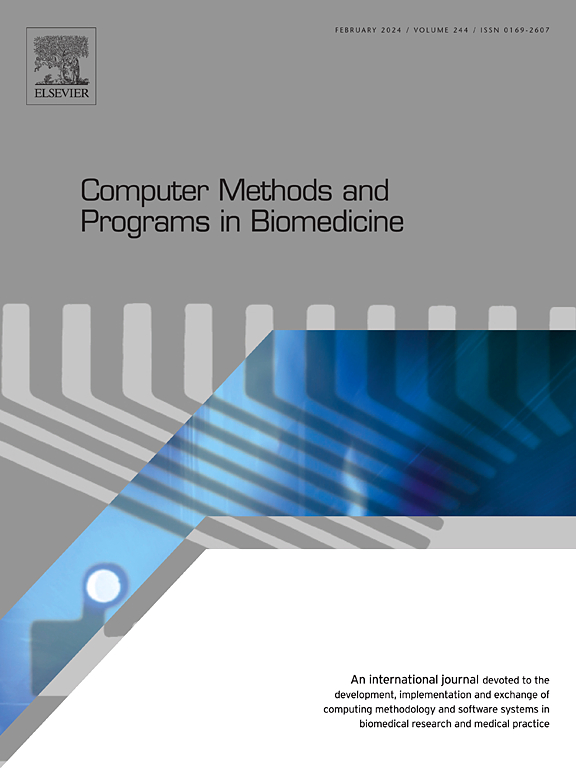使用可穿戴表面肌电臂带进行手写签名验证
IF 4.9
2区 医学
Q1 COMPUTER SCIENCE, INTERDISCIPLINARY APPLICATIONS
引用次数: 0
摘要
对远程身份验证日益增长的需求强调了健壮的签名验证系统的重要性。这个领域的一个主要挑战是手写签名中固有的大量类内可变性。为了解决这一问题,本研究探讨了通过可穿戴臂带使用表面肌电图(sEMG)进行签名验证。我们引入了一个双模型深度学习框架,该框架集成了肌肉协同激活模式和原始肌电信号波形。采用4通道臂带采集20个汉字签名个体的表面肌电信号数据,形成首个以可穿戴采集为中心的表面肌电信号特征数据集。实验结果表明,传统的基于特征的机器学习方法在性能上是有限的,准确率为80.90%,等效错误率(EER)为12.82%,主要是由于高的类内可变性。提出的框架包括:(1)处理编码肌肉激活序列的CNN- lstm架构,以及(2)设计用于从原始表面肌电信号中学习的多分支CNN。这些模型在决策层面的融合准确率达到91.65%,EER达到5.25%,与传统技术相比,准确率提高了10.75%。这些发现证实了所提出的方法在减少班级内变异的同时保持可穿戴设备的可用性的有效性,提供了一种实用和安全的生物识别认证解决方案。本文章由计算机程序翻译,如有差异,请以英文原文为准。
Handwritten signature verification using a wearable surface-EMG armband
The growing demand for remote authentication underscores the importance of robust signature verification systems. A major challenge in this domain is the substantial intra-class variability inherent in handwritten signatures. This study investigates the use of surface electromyography (sEMG) for signature verification through wearable armbands, aiming to address this issue. We introduce a dual-model deep learning framework that integrates muscle co-activation patterns with raw sEMG signal waveforms. A 4-channel armband was employed to collect sEMG data from 20 individuals signing Chinese characters, resulting in the first sEMG signature dataset centered on wearable acquisition. Experimental results show that conventional feature-based machine learning methods are limited in performance, yielding 80.90% accuracy and a 12.82% equal error rate (EER), primarily due to high intra-class variability. The proposed framework comprises: (1) a CNN-LSTM architecture that processes encoded muscle activation sequences, and (2) a multi-branch CNN designed to learn from raw sEMG signals. Fusion at the decision level between these models achieves 91.65% accuracy and 5.25% EER, reflecting a 10.75% improvement in accuracy compared with traditional techniques. These findings confirm the effectiveness of the proposed approach in reducing intra-class variability while preserving the usability of wearable devices, offering a practical and secure biometric authentication solution.
求助全文
通过发布文献求助,成功后即可免费获取论文全文。
去求助
来源期刊

Computer methods and programs in biomedicine
工程技术-工程:生物医学
CiteScore
12.30
自引率
6.60%
发文量
601
审稿时长
135 days
期刊介绍:
To encourage the development of formal computing methods, and their application in biomedical research and medical practice, by illustration of fundamental principles in biomedical informatics research; to stimulate basic research into application software design; to report the state of research of biomedical information processing projects; to report new computer methodologies applied in biomedical areas; the eventual distribution of demonstrable software to avoid duplication of effort; to provide a forum for discussion and improvement of existing software; to optimize contact between national organizations and regional user groups by promoting an international exchange of information on formal methods, standards and software in biomedicine.
Computer Methods and Programs in Biomedicine covers computing methodology and software systems derived from computing science for implementation in all aspects of biomedical research and medical practice. It is designed to serve: biochemists; biologists; geneticists; immunologists; neuroscientists; pharmacologists; toxicologists; clinicians; epidemiologists; psychiatrists; psychologists; cardiologists; chemists; (radio)physicists; computer scientists; programmers and systems analysts; biomedical, clinical, electrical and other engineers; teachers of medical informatics and users of educational software.
 求助内容:
求助内容: 应助结果提醒方式:
应助结果提醒方式:


